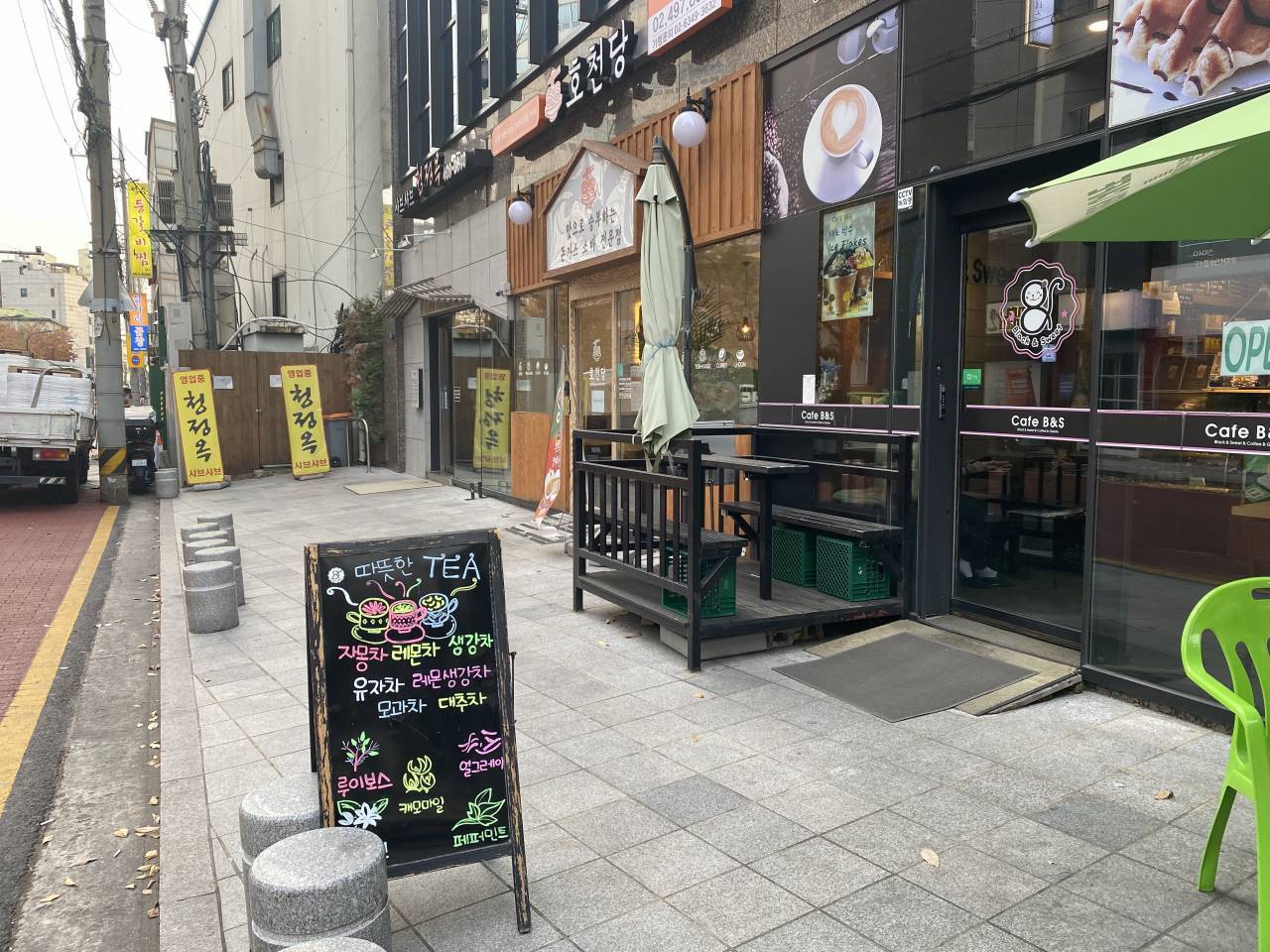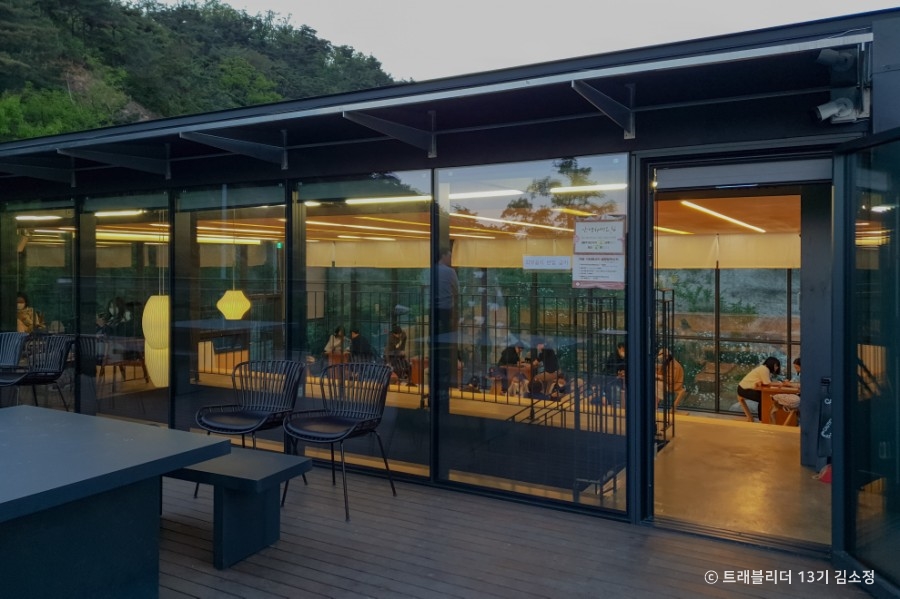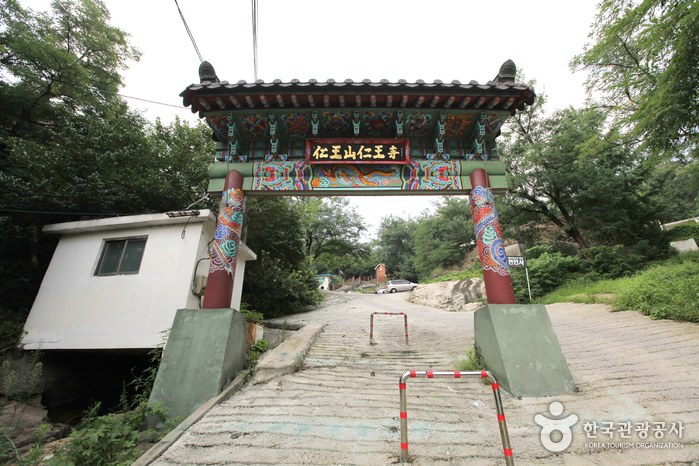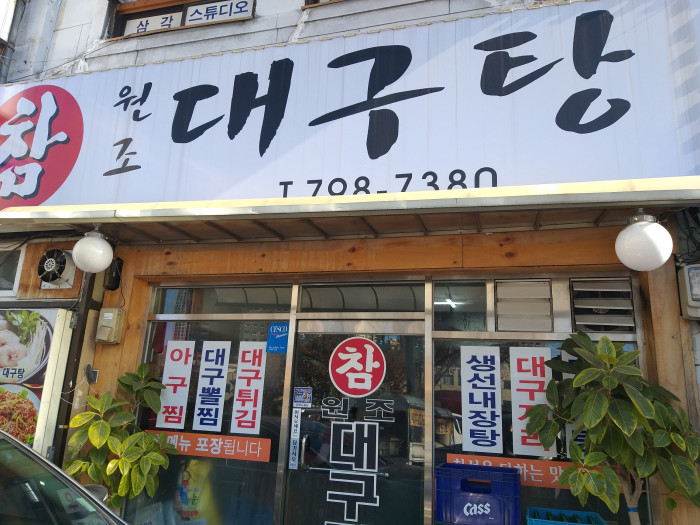Hocheondang Ttukseom Station(호천당 뚝섬역)
4.4Km 2020-10-30
#103, 1F, 19, Sangwon-gil, Seongdong-gu, Seoul
+82-2-497-8880
This is a Japanese cuisine located in Seongsu-dong, Seoul. The representative menu is buckwheat soba noodles. A restaurant specializing in pork cutlet and soba noodles.
Inwangsan Mountain Chosochaekbang (인왕산 더숲 초소책방)
4.4Km 2024-03-06
172 Inwangsan-ro, Jongno-gu, Seoul
Inwangsan Mountain Chosochaekbang is a bakery and book café located along the trail of Inwangsan Mountain, remodeled from an old police station. Surrounded by glass walls within the forest, it blends seamlessly with nature, offering a panoramic view of Namsan Tower through the transparent windows. On the second floor terrace, guests can enjoy the scenic view of Seoul. Freshly baked bread and desserts are available daily, and the venue occasionally hosts book talks and music concerts.
Olive Young - Dapsimni Station Branch [Tax Refund Shop] (올리브영 답십리역점)
4.4Km 2024-06-27
1F, #103, 81, Gomisul-ro, Dongdaemun-gu, Seoul
-
Inwangsa Temple (인왕사 (서울))
4.4Km 2020-04-02
16-1, Tongil-ro 18ga-gil, Jongno-gu, Seoul
+82-2-737-4434
Inwangsa Temple refers to the entire cluster of small Buddhist temples located on Inwangsan Mountain (alt. 338m) in the heart of Seoul. The eastern foot of the mountain has many scenic spots with its distinctively cozy and tasteful atmosphere, and the northern area called Mugye-dong also offers beautiful scenery. Inwangsa Temple was established in the early Joseon period (1392-1910) to guard the national palace Gyeongbokbung. The temple is comprised of 11 shrines from five different Buddhist orders. The unique design of each shrine adds pleasure to hikers on their way up to Seonbawi, an unusual rock formation that is a site of many folk beliefs and shamanist rites.
BENIKEA Hotel Flower (베니키아호텔 플라워)
4.4Km 2021-05-01
269, Wangsan-ro, Dongdaemun-gu, Seoul
+82-2-962-8251
Located approximately 500 meters from Cheongnyangni Station, Benikea Hotel Flower is a great choice for visitors traveling by train. Although the guestrooms are relatively small, they are well equipped with convenient amenities and furnishings. Some rooms even have a computer and a large TV. The hotel is located near significant tourist attractions such as Jongno, Gyeongbokgung Palace, Insa-dong and Cheonggyecheon Stream.
Seoul Hyochang Park (서울 효창공원)
4.5Km 2024-07-09
177-18 Hyochangwon-ro, Yongsan-gu, Seoul
+82-2-2199-7608
Hyochang Park covers 122,245 square meters spanning across Hyochang-dong and Cheongpa 2-dong. It is a historic landmark that once contained several royal tombs, and was known at that time as Hyochangwon. The cemeteries that were originally located in Hyochangwon belonged to Crown Prince Munhyo, King Jeongjo’s first son who died at the age of five; Royal Noble Consort Uibin of the Seong Clan, King Jeongjo’s royal concubine and Crown Prince Munhyo’s mother; Royal Noble Consort Sugui of the Park Clan, King Sunjo’s royal concubine; and her daughter Princess Yeongon. The royal tombs were moved to Seooreung Tombs in the waning months of the Japanese colonial period. The Japanese empire began the development of Hyochangwon into a park in 1924, and the Japanese governor-general officially assigned the site as a park in 1940.
Presently, several of Korea’s greatest leaders are buried in Hyochang Park. The remains mostly belong to independence activists including Yoon Bong-gil, Lee Bong-chang, and Baek Jeong-gi, whose graves are collectively known as Samuisa Tomb. A statue of Lee Bong-chang has been built in the graveyard. Among the other patriotic martyrs who are interred in the park are Kim Gu and some of the key figures of the provisional government such as Lee Dong-nyeong, Cha I-seok, and Cho Seong-hwan. An ancestral shrine named Uiyeolsa has been built along the main gate and holds the portraits of the deceased independence activists.
Olivine Spa (올리바인 스파)
4.5Km 2024-12-10
4-1 Tongil-ro 16-gil, Jongno-gu, Seoul
Chosen as one of the 25 recommended wellness tourist destinations by the Ministry of Culture, Sports and Tourism and the Korea Tourism Organization, Olivine Spa operates a luxury spa and a beauty & slimming center in downtown. The spa also provides professional pre-natal and post-natal massage, body shape care, and various beauty programs in partnership with Seran General Hospital and Olivium (a postpartum care center). Olivine Spa provides massages by top-tier therapists in the industry who will relieve fatigue and eliminate toxins accumulated through daily life. They will help your body become healthier and more balanced, ensuring customer satisfaction. Furthermore, Olivine Spa uses Swiss premium brands Les Nouvels Aroma and Darphin in their programs. Its beauty & slimming center provides customized consulting and various beauty-related medical programs in partnership with medical staff at Seran General Hospital.
Chamdaegutang (참대구탕)
4.5Km 2021-09-01
3, Hangang-daero 62-gil, Yongsan-gu, Seoul
+82-2-798-7380
This is a Korean cuisine located in Itaewon, Seoul. Clear fish soup boiled with codfish (fish). The best menu at this restaurant is codfish stew.
Cheongun Literature Library (청운문학도서관)
4.5Km 2023-08-16
40 , Jahamun-ro 36-gil, Jongno-gu, Seoul
Cheongun Literature Library is located at the foot of Inwangsan Mountain and can be reached by following the mountain's walking trail starting from Changuimun Gate along the fortress wall. This public hanok library is designed in consideration of the sloped topography and the natural scenery of Inwangsan Mountain. The library consists of two floors: an underground floor and a ground floor. While the ground floor is designed as a traditional hanok, the underground floor is made of concrete to support the hanok building and the spacious outdoor yard. By implementing the natural slope in the library's design, the underground southern entrance is exposed, allowing sunlight to enter. The underground floor features a wide collection of books while the ground floor serves as a place for reading. The natural environment surrounding the library adds to the hanok building's traditional and peaceful charms.





 English
English
 한국어
한국어 日本語
日本語 中文(简体)
中文(简体) Deutsch
Deutsch Français
Français Español
Español Русский
Русский